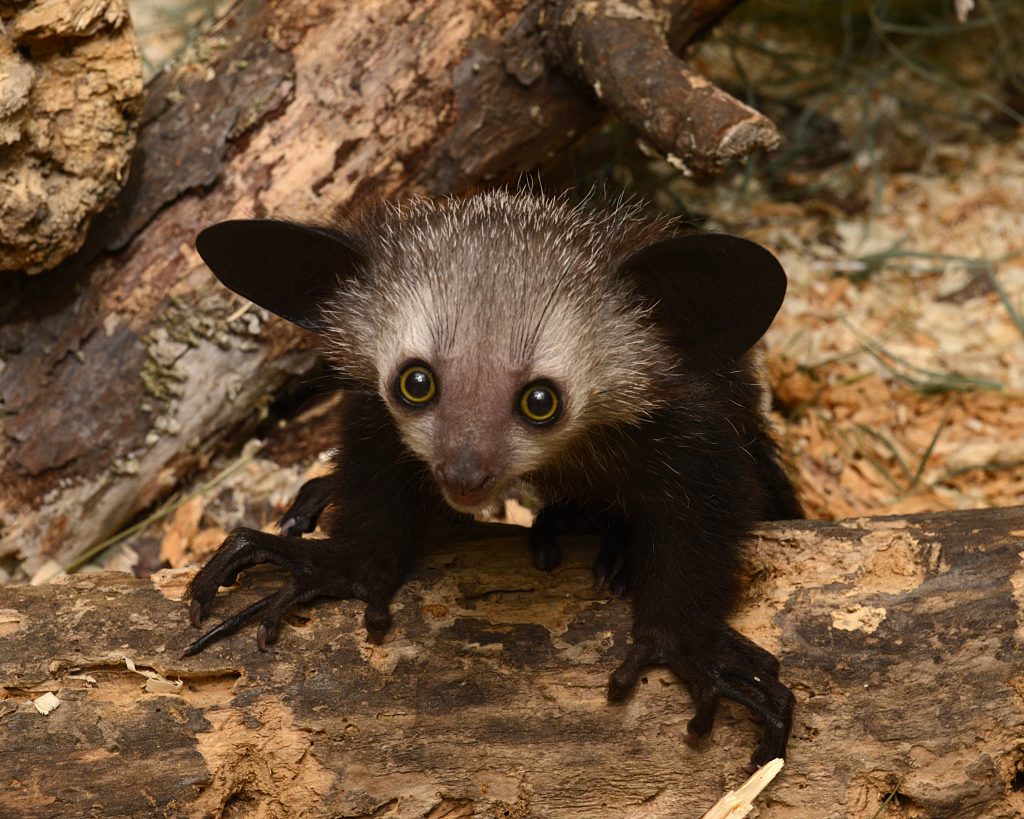
Agatha. Photo by David Haring.
By Colin Warren-Hicks for the Durham Herald-Sun
View the original article HERE.
DURHAM, N.C. – SAS saved a baby lemur.
Well – to clarify – SAS data management programing played a major part in helping to save the life of a rare but ailing newborn aye-aye lemur named Agatha.
That’s what Anne-Lindsay Beall, editor of the Customer Intelligence Knowledge Exchange at SAS, wrote in a SAS Voices blog post Monday titled “How data is helping save the world’s most endangered mammals.”
The Duke Lemur Center (DLC) has cared for over 4,000 animals across 31 species in its 50-plus year history, and the center uses SAS Institute Inc. to analyze data on every one of them.
“Because the DLC has records for so many previous aye-aye births, animal care staff could quickly calculate that the new infant’s birth weight was only 67 percent of the average lemur birth weight,” Beall wrote.
Agatha was placed on intensive monitoring and supplementation.
The lemur center and SAS developed a closer bond last summer.
Briana Ullman was a creative marketing intern at SAS’s Cary campus, and her college roommate was interning at the Duke Lemur Center off Erwin Road.
Three weeks into Ullman’s internship, SAS chief marketing officer Randy Guard encouraged his interns “to think outside the boundaries of what rules already existed,” Ullman wrote in a blog-like post on her LinkedIn page.
“The biggest way I was able to enact this change was, believe it or not, through lemurs,” Ullman wrote. “We may not have been looking for them, but the lemurs found us.”
When Ullman’s roommate returned to their apartment with stacks of spreadsheets on lemur data, Ullman got an idea.
She dove into the research looking to further the two organizations’ relationship and found retired SAS employees had already volunteered with the lemurs and their caretakers.
“We’ve been using SAS software to track our animal data since about 2012,” said Sarah Zehr, data manager and research scientist at the lemur center. “People who had retired from SAS were looking to do volunteer work, and they worked to initiate this database.”
Ullman had been tasked with thinking up initiatives to better familiarize the millennial generation with SAS products, Zehr said. Ullman reached out to find out if lemurs might act as a middle man between 20-somethings and SAS – prompting introductions and promoting engagement.
Ullman was also tasked with developing ideas for more concrete collaboration, Zehr said. “We have lemurs, we’re in the neighborhood, a collaboration could be helping to promote conservation or something, along those lines,” she said.
On Aug. 23, Ullman gave a presentation to the center’s staff and her own supervisor, Randy Guard, on the possibilities of new, robust institutional relations.
“I even told some people, ‘Whoa,’” Zehr said, “’An intern is actually doing something.’”
CONTACT:
Colin Warren-Hicks, Durham Herald Sun
cwarrenhicks@heraldsun.com
(919) 419-6636
Published September 26, 2017.

